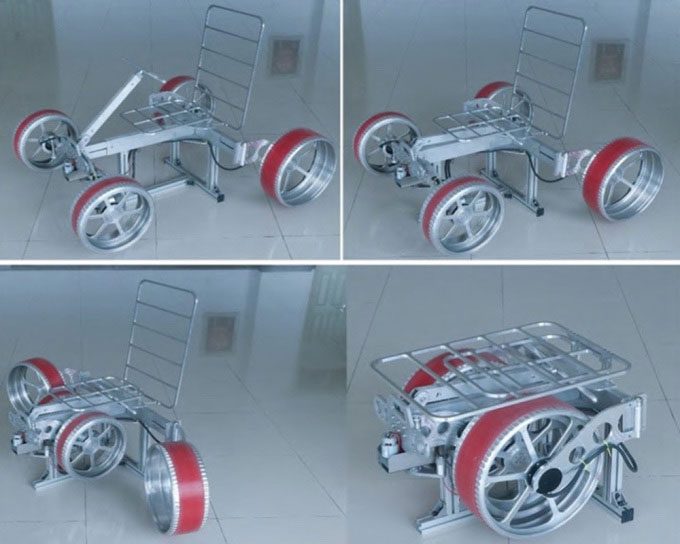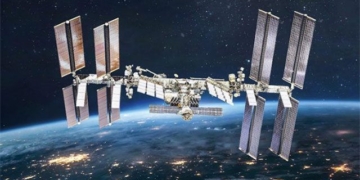The CELV 4-Wheeled Vehicle is Designed for Astronauts to Make Emergency Moves, with a Maximum Speed of 10 km/h and a Capacity of 90 kg on the Moon.
A research team from Jilin University and the China Academy of Space Technology (CAST) has developed a small, foldable vehicle that can be easily deployed for emergency returns to the base or for short trips around the lunar base, according to a report by SCMP on April 11.

The CELV prototype developed for testing. (Photo: SCMP)
The new vehicle, named Chinese Emergency Lunar Vehicle (CELV), has a maximum speed of 10 km/h. The vehicle is equipped with four wheels, weighs 40 kg, and is about the size of a mini refrigerator when folded and stored in the back of a regular transport vehicle.
The CELV is made entirely of metal and extends nearly 2 meters when unfolded. It is designed to carry 90 kg on the lunar surface, which is equivalent to about 540 kg on Earth, where gravity is approximately six times stronger than on the Moon. The vehicle operates using two electric motors, with one motor for each rear wheel, while the front wheels can rotate 30 degrees.
In performance tests, the CELV successfully traversed obstacles up to 10 cm high and climbed slopes of 20 degrees, carrying two people with a total weight of 130 kg—one seated in the front and the other standing on the rear pedal. The research findings were published in the Chinese journal Optics and Precision Engineering.
The researchers noted that the CELV is small, lightweight, and highly maneuverable. “Astronauts only need to pull or rotate certain components to open the vehicle, without needing to assemble or adjust anything major during this process,” the authors wrote. The team simplified the vehicle’s structure by eliminating components like control panels and enhancing shock absorption for a more comfortable ride.
“Developing a vehicle for emergency returns to the base is crucial for China’s future crewed lunar exploration missions”, said Zou Meng, an expert at the Key Laboratory of Biological Engineering at Jilin University, along with co-authors.
To date, the United States is the only country that has operated crewed vehicles on the Moon. During the last three Apollo missions in the early 1970s, NASA astronauts drove over 90 km on the lunar surface and collected more than 280 kg of rocks to bring back to Earth.
In recent years, several countries such as the United States, China, and Japan have developed crewed rovers and robotic legged vehicles for movement on the Moon and Mars. NASA plans to send humans to the Moon by the end of 2025, while China aims to achieve its first lunar landing around 2030.





















































